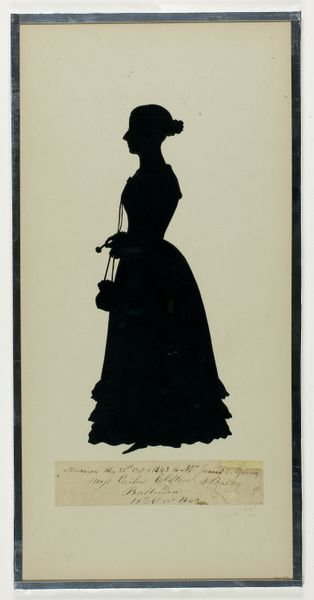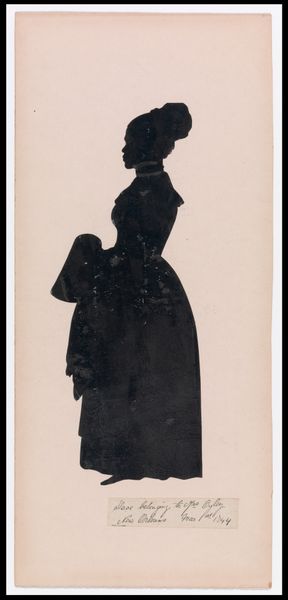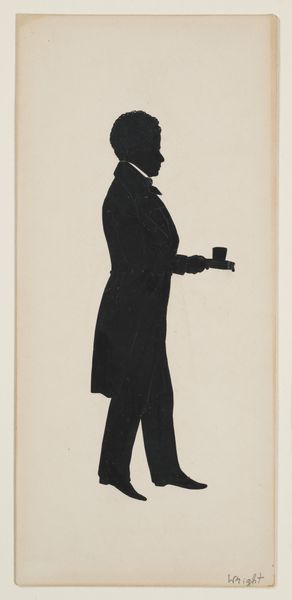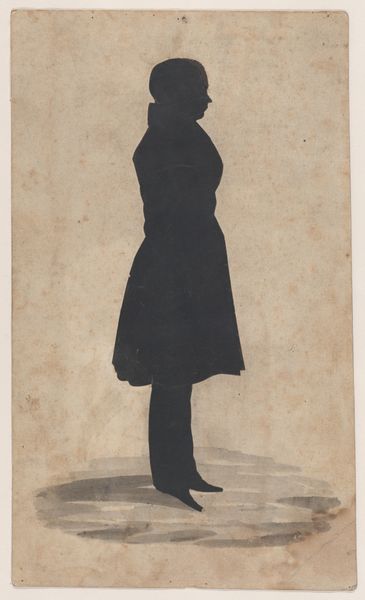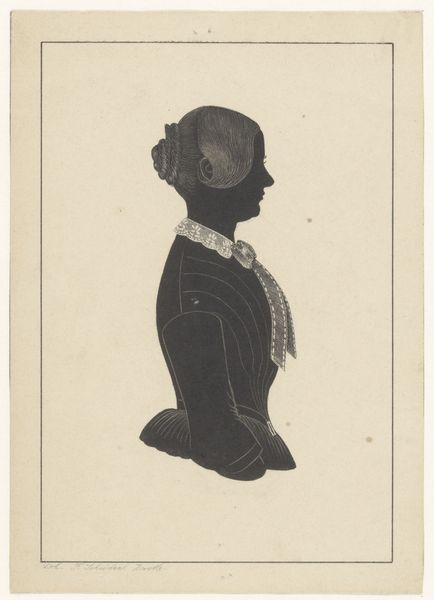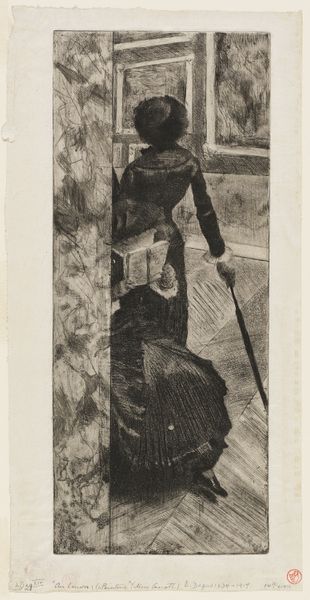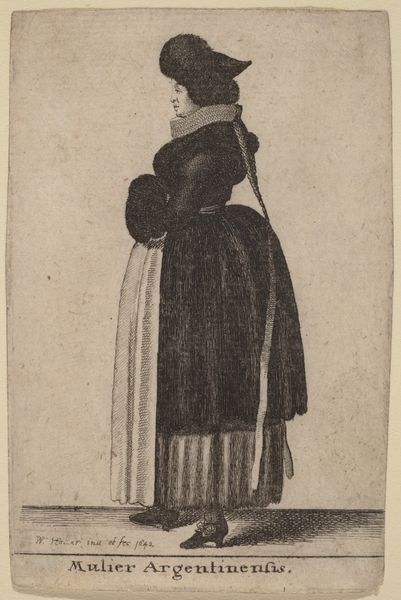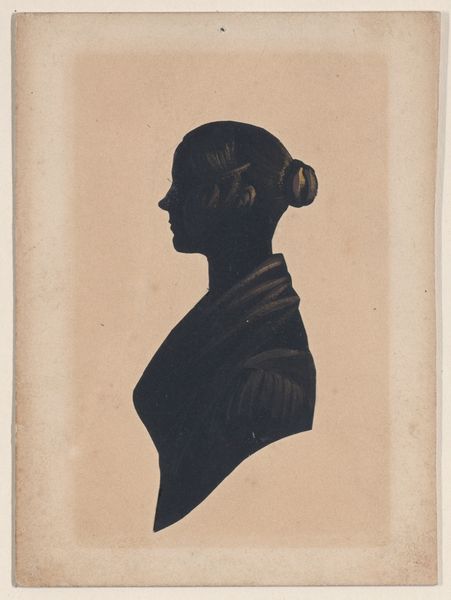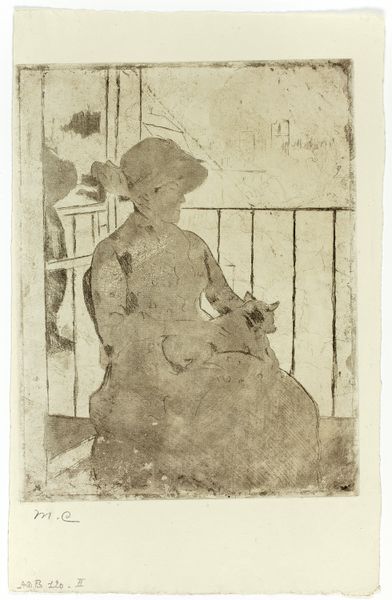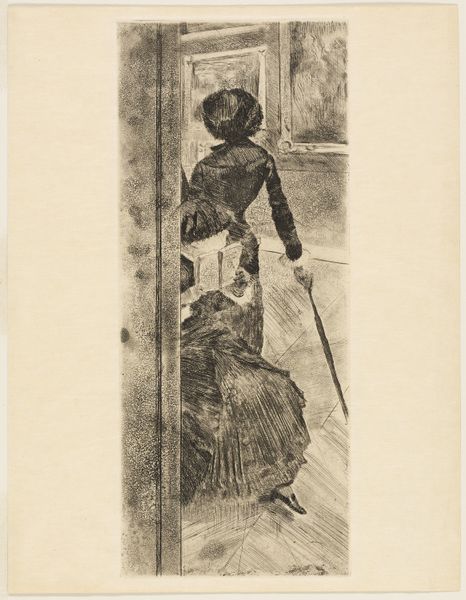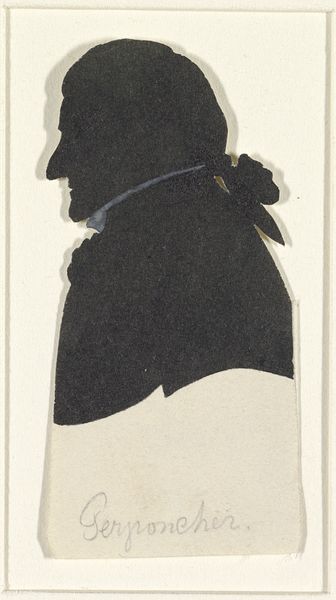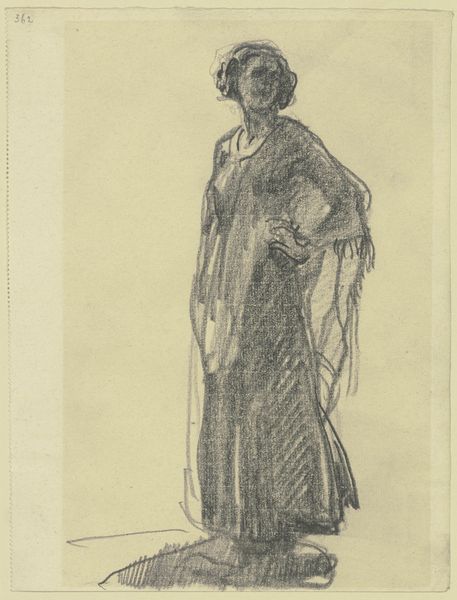
drawing, print, paper
#
portrait
#
drawing
#
negative space
# print
#
caricature
#
caricature
#
paper
#
romanticism
Dimensions: Image: 7 9/16 × 3 1/4 in. (19.2 × 8.3 cm) Frame: 17 11/16 × 11 13/16 in. (45 × 30 cm)
Copyright: Public Domain
Curator: Let's take a look at this silhouette by Auguste Edouart, entitled "Dalmany," created around 1844. It's currently housed at the Metropolitan Museum of Art. What are your initial impressions? Editor: Stark! Strikingly so. It's all angles and stark black against… nothing much. I feel a sort of quiet dignity emanating from her silhouette, though, a woman firmly planted. Is that her station in life showing or something more intimate? Curator: Silhouette art experienced a surge in popularity around that time. Its relative affordability allowed it to become available to a wider audience, outside the traditionally wealthy families commissioning painted portraits. It certainly democratized image-making and representation. Think about the material production itself: cheap! Editor: Yes, but cheap isn’t always... simple. Just look at the precise details the artist captured here. The woman's headscarf, the curve of her shoulders. Even her posture is somehow expressive. How much of that depends upon the person whose shape the silhouette defines? Curator: What interests me is the material labor and context: Edouart, a French artist working for a living, caterered to bourgeois aspirations using just paper and skillful cutting. These became documents, if stylized ones, of an emerging middle class keen to emulate aristocratic traditions of portraiture. The original was expensive, painted; now it's cheap and a bit flat. Editor: Exactly! Though flatness doesn't mean depthless, I think. Silhouettes encourage projection; they let us see what we want to see in the negative space. Do we really need pigment to fill in the blanks of her past? I would venture no! What we lack in visible brushstrokes, we recover in the poetry of inference. She’s not just Dalmany. She's a memory. Curator: True enough. While one may lose certain textural details, one certainly gains insight on the social relations and economy surrounding it as well as the consumption habits and material literacy during the Victorian era. I find this dialogue rather useful for a more enriched approach! Editor: Likewise! These old outlines suddenly have a lot to say. Thank you!
Comments
No comments
Be the first to comment and join the conversation on the ultimate creative platform.
